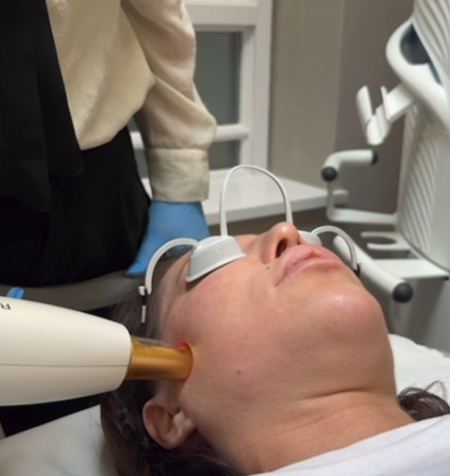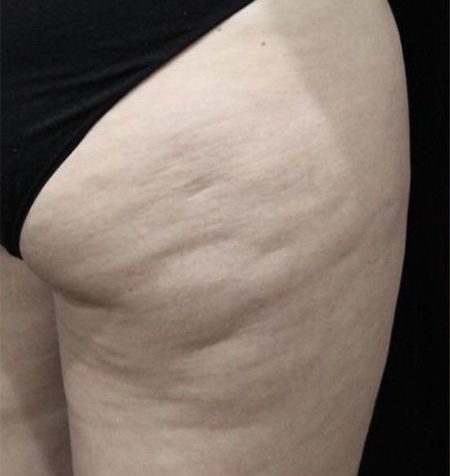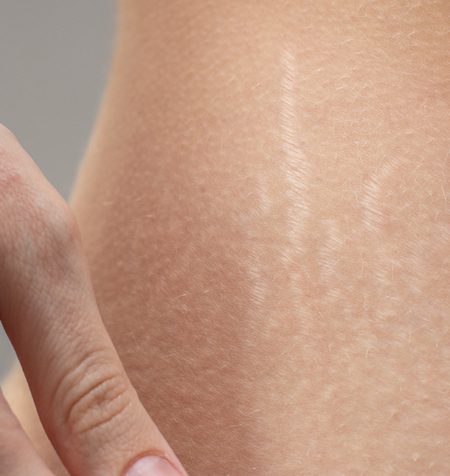Body Conditions
Scar Removal & Skin Healing

Scars develop from a wound after injury, when the damaged skin surface repairs itself and knits back together. The body’s natural processes of healing and repair respond by producing extra collagen at the site, which helps the area to heal. This leaves thick, fibrous tissue in place of the normal skin surface, which is different in texture and appearance to that of normal skin.
There are a range of scars that can form, each with their own characteristics.
Fine line scars are usually left behind after a minor cut or from a wound following a surgical procedure. A raised line is common with this scar that usually flattens out over time. An overgrowth of tissue at the wound produces a keloid scar. This scar can be very raised from the skin’s surface and may even restrict movement, depending on location. Keloid scars will often continue to grow, even after the wound has healed. Hypertrophic scars, like keloid scars, will see too much collagen produced at the site. Although they do not extend past the original wound, they may continue to get thicker as time passes. Acne and chickenpox are examples of conditions that cause pitted or sunken scarring. Also known as atrophic or ice-pick scars, these irregularities develop when the injury has also caused a loss of underlying fat. Burns will often cause scar contractures. These scars often cover a large area and occur from skin that has shrunk, causing tightness and restricted movement.
Most people find they have a scar somewhere, and although scarring will often fade over time, will not disappear totally. Scarring can affect the even tone of the skin and affected people would often like to lessen its appearance, especially if it is in a noticeable place. At MediSpa Wilmslow we offer treatments to help minimise the appearance of scars.
Treatments include:
Scars develop from a wound after injury, when the damaged skin surface repairs itself and knits back together. The body’s natural processes of healing and repair respond by producing extra collagen at the site, which helps the area to heal. This leaves thick, fibrous tissue in place of the normal skin surface, which is different in texture and appearance to that of normal skin.
There are a range of scars that can form, each with their own characteristics.
Fine line scars are usually left behind after a minor cut or from a wound following a surgical procedure. A raised line is common with this scar that usually flattens out over time. An overgrowth of tissue at the wound produces a keloid scar. This scar can be very raised from the skin’s surface and may even restrict movement, depending on location. Keloid scars will often continue to grow, even after the wound has healed. Hypertrophic scars, like keloid scars, will see too much collagen produced at the site. Although they do not extend past the original wound, they may continue to get thicker as time passes. Acne and chickenpox are examples of conditions that cause pitted or sunken scarring. Also known as atrophic or ice-pick scars, these irregularities develop when the injury has also caused a loss of underlying fat. Burns will often cause scar contractures. These scars often cover a large area and occur from skin that has shrunk, causing tightness and restricted movement.
Most people find they have a scar somewhere, and although scarring will often fade over time, will not disappear totally. Scarring can affect the even tone of the skin and affected people would often like to lessen its appearance, especially if it is in a noticeable place. At MediSpa Wilmslow we offer treatments to help minimise the appearance of scars.
Treatments include:
Treatments available include the below:
Treatments available include the below:











